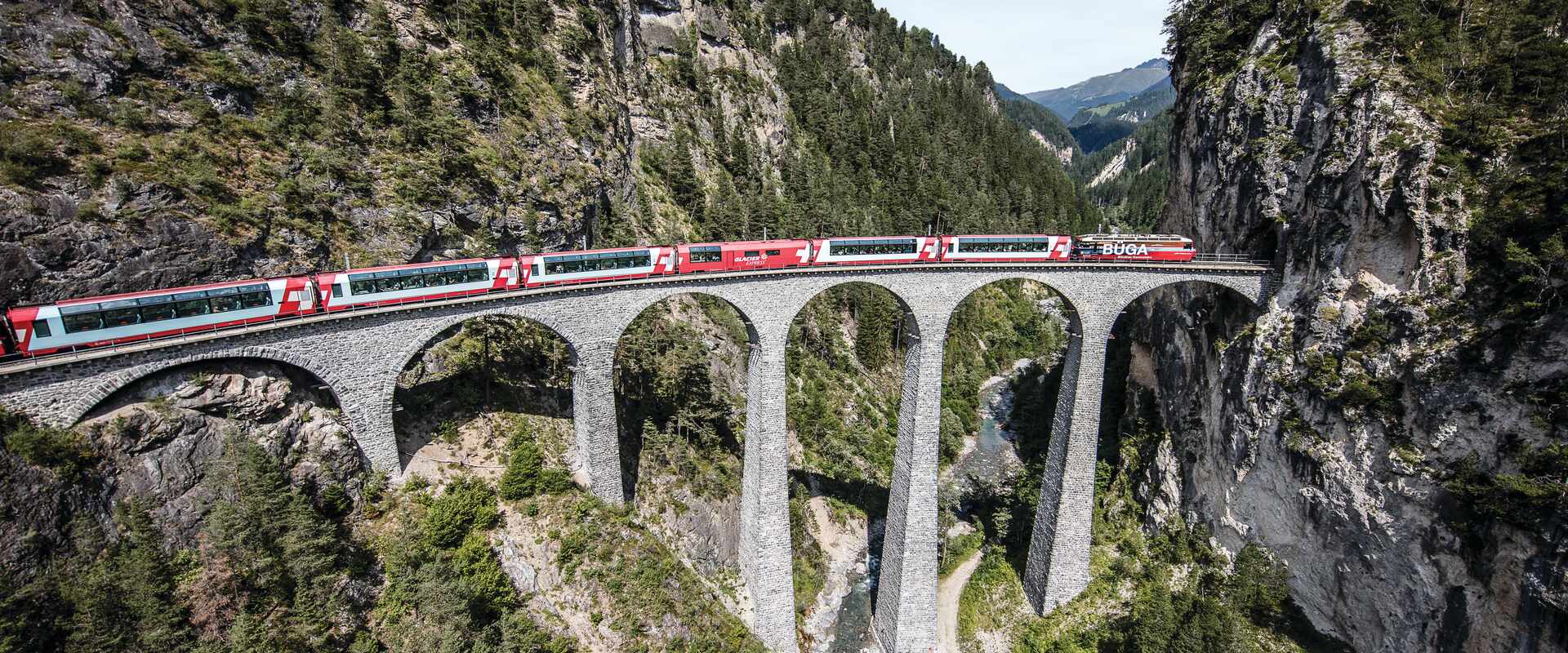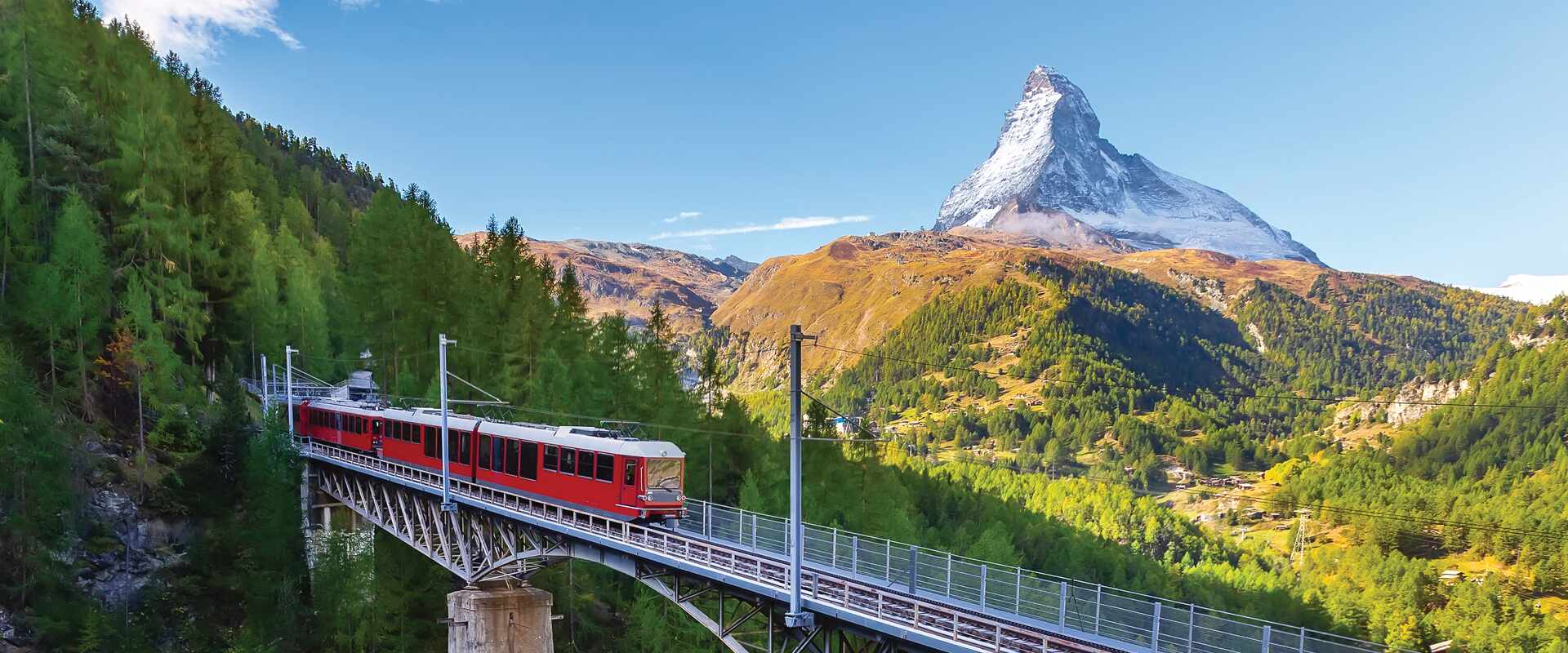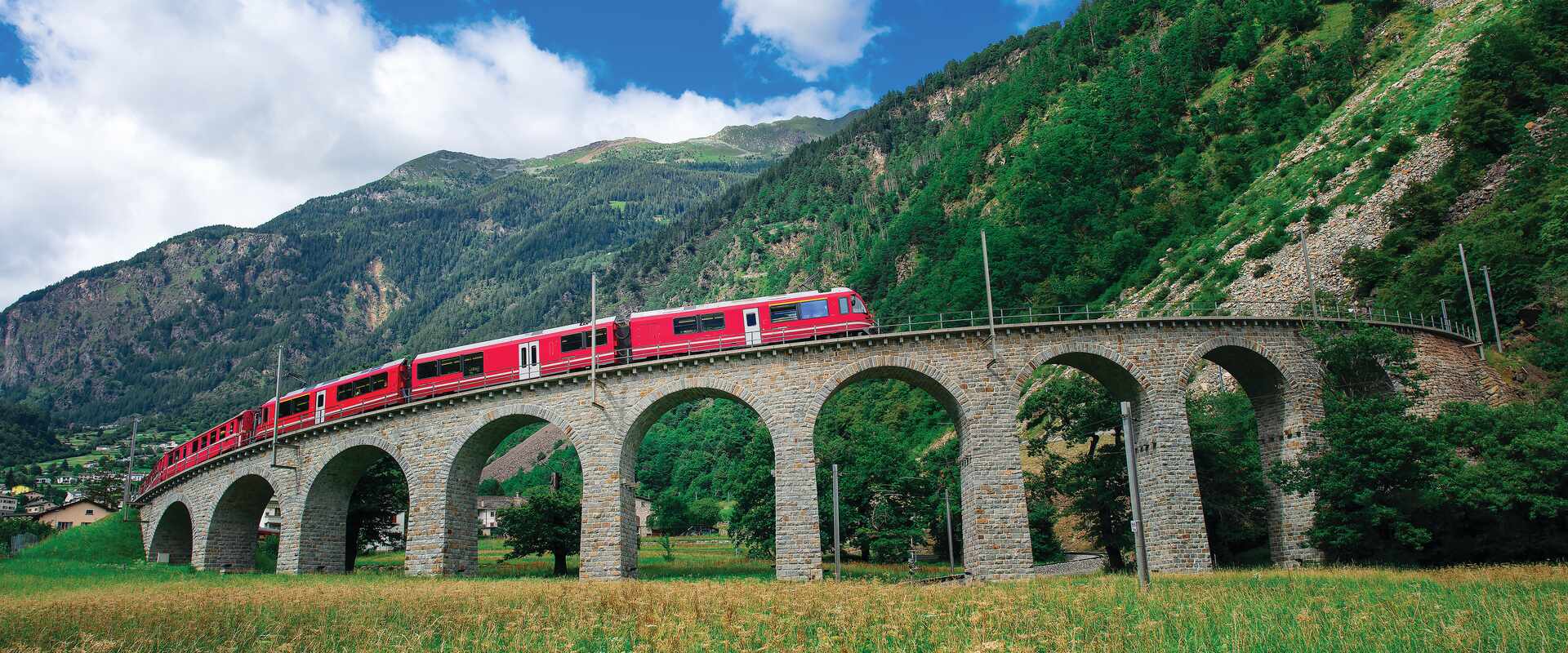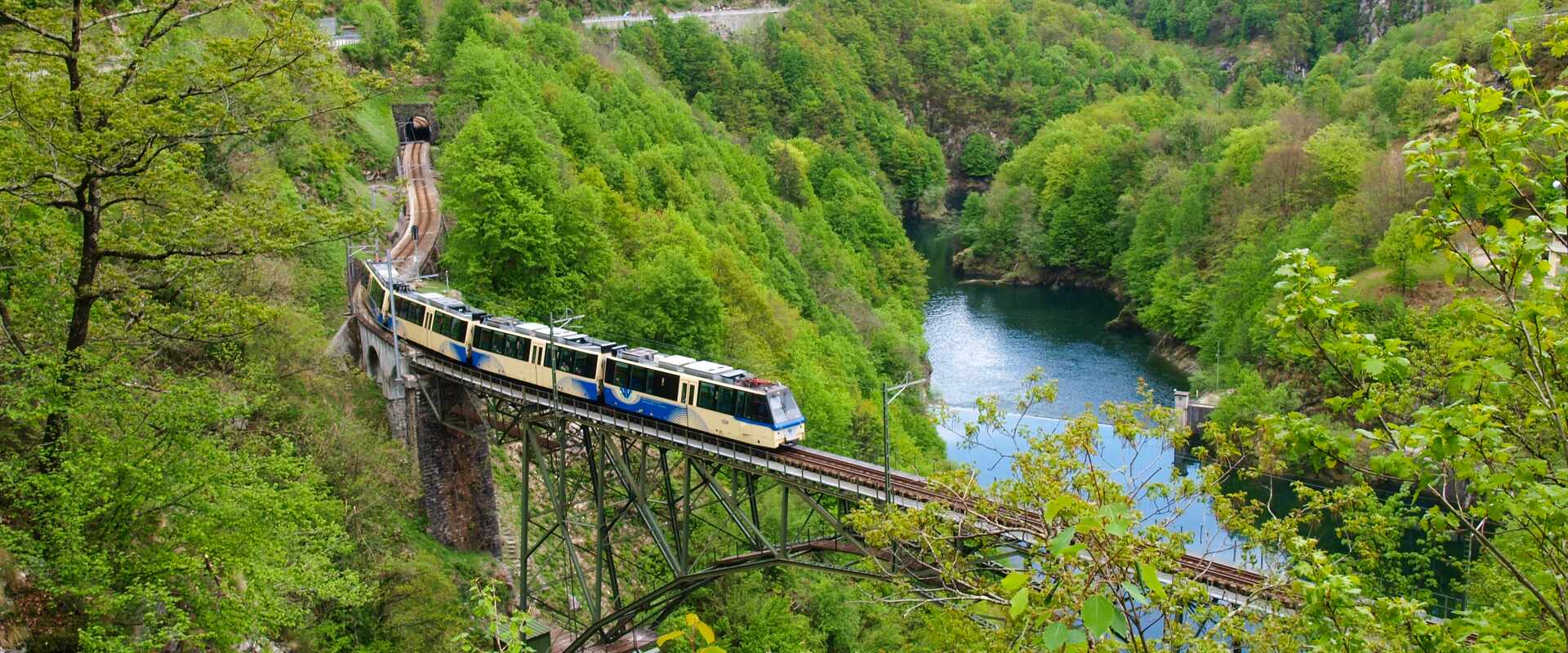
Riding the Rails through the Swiss Alps
Christie Sinclair discovers the views of soaring peaks to snow-dusted towns on Switzerland’s trains.
With spine-tingling journeys across some of the world’s most epic alpine landscapes, rail is the only way to immerse yourself in the scenery of the Swiss Alps in Europe. Unless you’re prepared to don your crampons and scale the mountains on foot that is.
Steel tracks sketch lines across just about every corner of Switzerland. They carve valleys in half and slice through green meadows daubed with wildflowers. They huff and puff into the clouds, corkscrew down steep inclines and cut right through mountainsides. Even regular suburban routes reveal beautiful scenes as they rattle between villages and cities and mountains. However, you can’t top the views from the slow-moving rail journeys through the Alps as seen on our 8 Day Scenic Switzerland trip.
Glacier Express
It’s a big call, but nothing beats the Glacier Express. Though there’s nothing speedy about it. The world’s slowest express line takes a little over eight hours to navigate the 300-kilometre route between Zermatt and St Moritz. That’s eight precious hours to cherish the slow-motion montage of glaciers, waterfalls and valleys studded with castles from the glass roof and panoramic windows. It’s tricky to pinpoint the most scenic part of the journey, but descending into the 15-kilometre Furka Base Tunnel and bursting out the other side to bright alpine views is positively thrilling. So too is when the train rattles from Andermatt to the highest point of the journey at Oberalppass, a dizzying 2,033 meters above sea level.

Gornergrat Railway
Jump aboard the glossy red carriages of the Gornergrat Railway in the centre of Zermatt and rumble along Europe’s highest open-air railway to 3,089 metres above sea level. As the train clunks and jolts to the summit along the electric cog railway, one side affords views of alpine fields. On the other is a slightly unnerving drop off. At the top, 20 jagged peaks of a perpetual winterscape, including the Matterhorn and the Monte Rosa massif, clip the sky in all directions. You’ll have to squint to see the city below as you immerse yourself in the panoramic view of the mountains. You may even be lucky enough to spot native animals to these mountains: marmots and chamois.

Bernina Express
You can traverse Europe’s highest rail crossing on the Bernina Express, connecting the Swiss town of Chur with Tirano in the Italian Alps. Constructed purely for sightseeing, the modern panoramic carriages offer unrestricted views as you squeeze between glaciers, mountains and forests through the heart of the Swiss Alps. You won’t want to miss a second of the scenery, especially along the Albula Railway. This 122-kilometre UNESCO-listed track passes over 196 bridges, pops through 55 tunnels and slows to reveal 20 quaint towns and villages. The famous Brusio spiral viaduct makes up part of this route, a section that loops around and around and spits the train back out where it started, only at a slightly lower altitude.

Centovalli Railway
You might want to brush up on your Italian for the journey along the Centovalli Railway, known as the Vigezzina in Italy. This little blue locomotive whisks you along a narrow-gauge track from Domodossola in the Piedmont region of northern Italy to Locarno in the south of Switzerland. Rocky gorges, stone villages, bubbling streams and waterfalls filter past the train’s window along a tangle of 83 bridges, 31 tunnels and countless kinks. A return trip from Domodossola takes around four hours. Be sure to linger in Locarno to enjoy some time on the shores of Lake Maggiore.

Don’t even think about bringing reading material for your rail jaunts through the Swiss Alps. Save that precious packing space. You’ll want to have your nose pressed to the window, and certainly not stuck in a book for these epic journeys.
